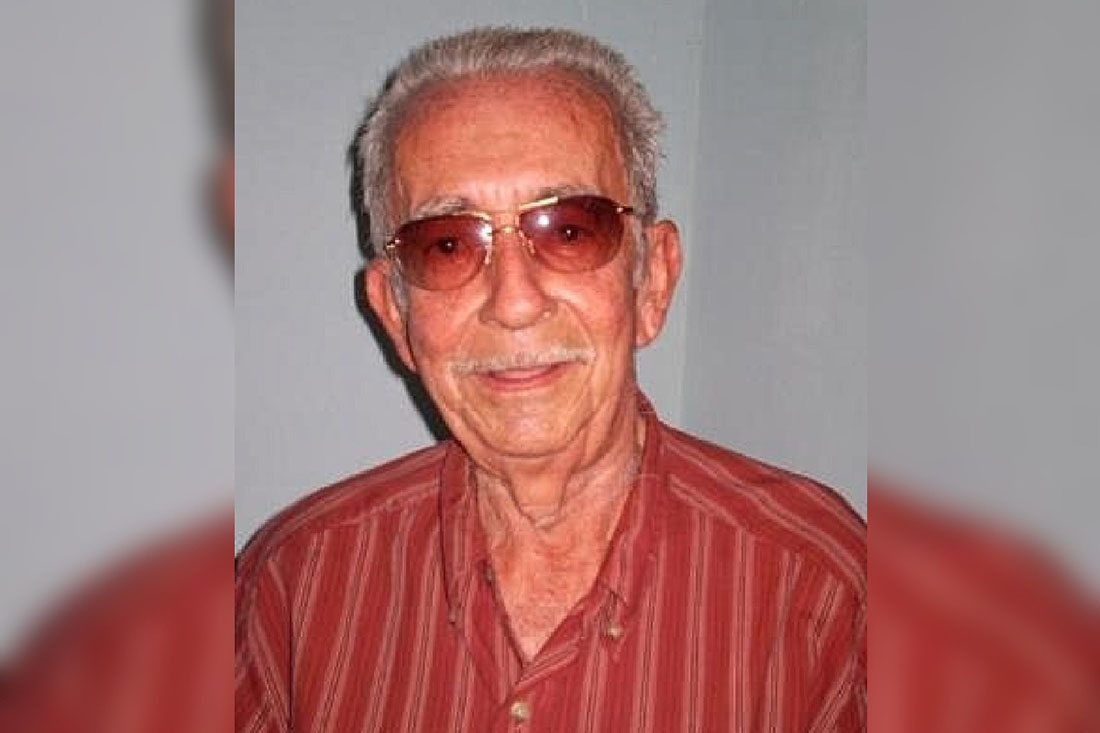Since the creation of the radio in Cuba in 1922, by the musician and patriot from Camagüey Luis Casas Romero, together with his son Luis Casas Rodríguez, much work has been done on the future of this media outlet that is still alive in the heart of many Cuban people.
A city like ours that is attached to the good saying and is recognized on the island as the cradle of good broadcasters, has a lot to tell about beautiful voices that made history in the ether and that are still alive in the memory of the radio. For this reason, on the centenary of Cuban radio, I think it is opportune to review the history of an essential voice in the work of radio broadcasters from Camagüey: Gróver Mármol Quintana.
This meeting was in 2015, at his home in La Vigía, a few months later at the age of 84, the teacher said goodbye to the world, leaving us the privilege of telling his story.
With his tenor voice intact and the joy that always comes from returning to the microphone, I was received. Thus we began a long conversation that made me travel through three very important media in our homeland, Channel -11, Radio Camagüey in its first headquarters and Radio Cadena Agramonte, the latter where he worked until he retired in 1996.
When he became an announcer
Its beginnings were in a small private station that belonged to the mayor of the region in 1947, Mr. Andrés Morán Cisneros, it was located in front of the current La Vigía funeral home and among its many names it was known as the CMJW, the double U and then Radio Triumph.
A few years later he appears before a tribunal of the University of Havana, which came to evaluate broadcasters in the provinces and upon passing the exam they give him his diploma.
But other alternative media were fashionable in those years, so Grover advertised in a car with loudspeaker propaganda from the different companies, attended banquets for the mayor’s elite and served as master of ceremonies, while keeping his jobs at the small station.
When everything started
Here he started his prolific career, which allowed him to work in almost all media, let’s start with television and that Channel -11, pioneer of development in the territory, since, according to our protagonist, his arrival was like it is WIFI today in our public places.
Quite an event, where the merchants put a television on the sidewalk and everyone who passed by stopped to watch, but it was dismantled very soon, so he continued to work alone on the radio.
Radio Cadena Suarito welcomes him on Finlay Avenue, with all the music of the time that was recorded in the capital and broadcast in several cities on the island, later becoming Radio Camagüey, but shortly after, Cadena Agramonte emerged, a place that he dedicated his greatest years of profession until his retirement.
He assures that it was not definitive because he always kept collaborating with some spaces, such is the case of the one dedicated to Mexican music every Sunday, Ecos de México, which is currently preserved in the programming list of Radio Cadena Agramonte.
An interesting anecdote
In the middle of our conversation I tell him that I am the director of a program on Radio Camagüey, dedicated to Mexican music and he answers me immediately…
“Yes, that is Mosaico Azteca, very good but it only lasts half an hour, they offered me the job when they created it, but I live very far away, the music of Lucha Villa is played there, do you know that I actually met her.”
And thinking how much the listeners of my program would like this detail, I ask him to tell me:
He says that in 1968 the Mexican singer visited Camagüey to offer a concert in the Workers’ Square, but the incessant rain forced her to move to the Main Theater, where the public overflowed the place, she entered the station to announce the change of plans and that’s how they met.
He also participated in many interesting events in his Camagüey, such as the visit of personalities from politics and music, film recordings, transmissions from the different sugar mills to support the harvest and the presentation of night shows in theaters and cultural spaces.
There are not a few awards received during his intense career as an announcer. There I found distinctions such as the radio microphone, commemorative medals of the city and of the 25th anniversary of the radio, the Image Award, the ICRT Artist of Merit, those of participant in radio and television festivals and many more.
The farewell
Almost as I left, I asked him to say goodbye as he did on his radio program. As we have in common the taste for the music of the brotherly Mexican people, I was curious.
He takes the microphone and with that elegant pose that radio broadcasters do not abandon, he projects the sharp timbre that remains intact: “Ecos de México, a program made to enjoy the music of our Mexican brothers, we will enjoy…Lucha Villa”
And with the mariachis in the background, he says goodbye and I leave pleased by such a special encounter.
Notes
May this evocation serve the master of Announcers, to remember other unforgettable voices in Camagüey, such as those of Francisco Rivero, José Luis Cadena and many others, who have already departed but will leave their mark on the ether, assuring us that the Cuban Radio will continue to live for another 100 years.
Translated by: Aileen Álvarez García






